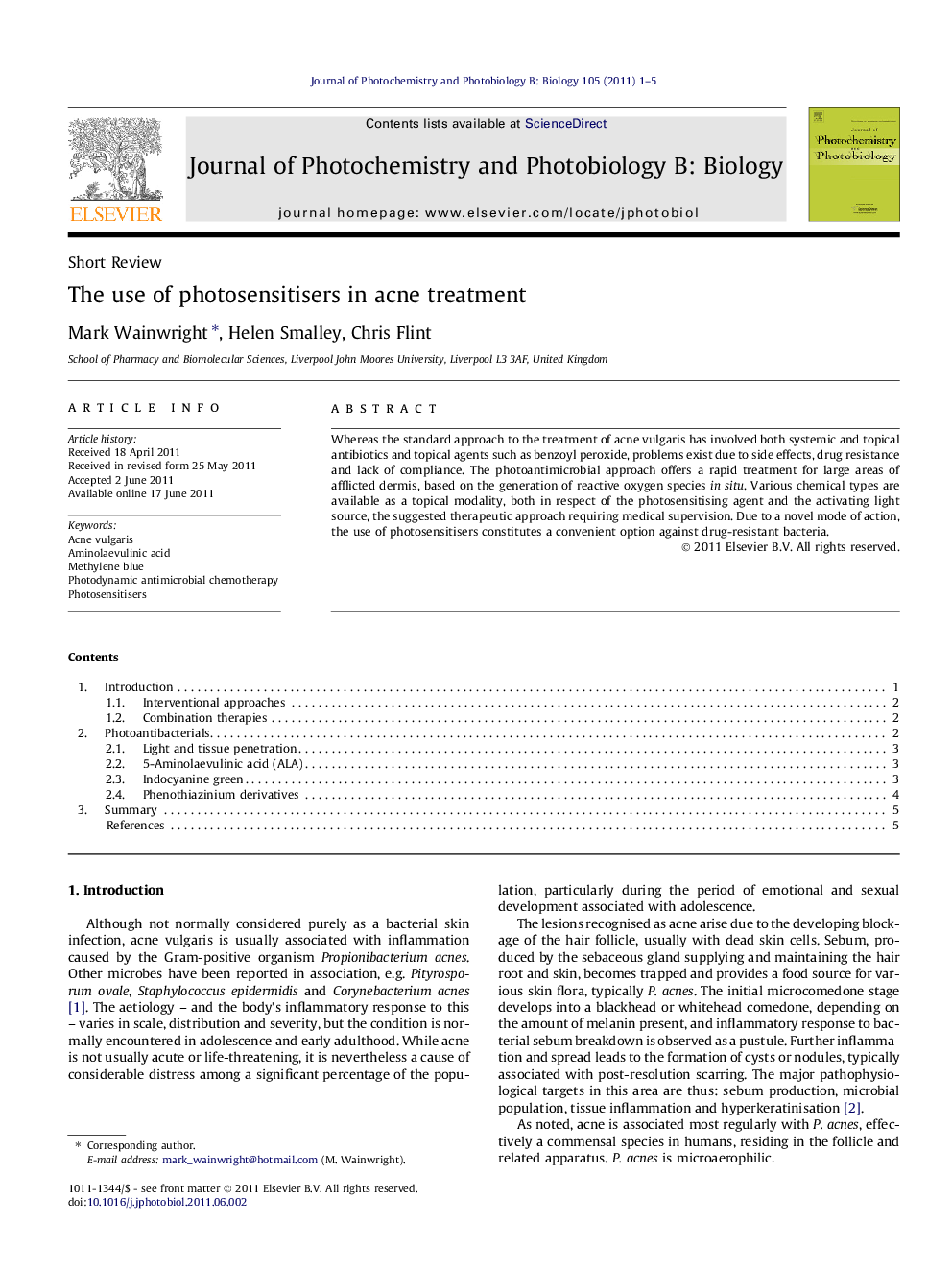| Article ID | Journal | Published Year | Pages | File Type |
|---|---|---|---|---|
| 30766 | Journal of Photochemistry and Photobiology B: Biology | 2011 | 5 Pages |
Whereas the standard approach to the treatment of acne vulgaris has involved both systemic and topical antibiotics and topical agents such as benzoyl peroxide, problems exist due to side effects, drug resistance and lack of compliance. The photoantimicrobial approach offers a rapid treatment for large areas of afflicted dermis, based on the generation of reactive oxygen species in situ. Various chemical types are available as a topical modality, both in respect of the photosensitising agent and the activating light source, the suggested therapeutic approach requiring medical supervision. Due to a novel mode of action, the use of photosensitisers constitutes a convenient option against drug-resistant bacteria.
► Review of the potential of photoantimicrobials in the treatment of acne vulgaris. ► Comparisons of established and new photosensitisers/precursors. ► New phenothiazinium derivative is considerably more effective in vitro than methylene blue.
